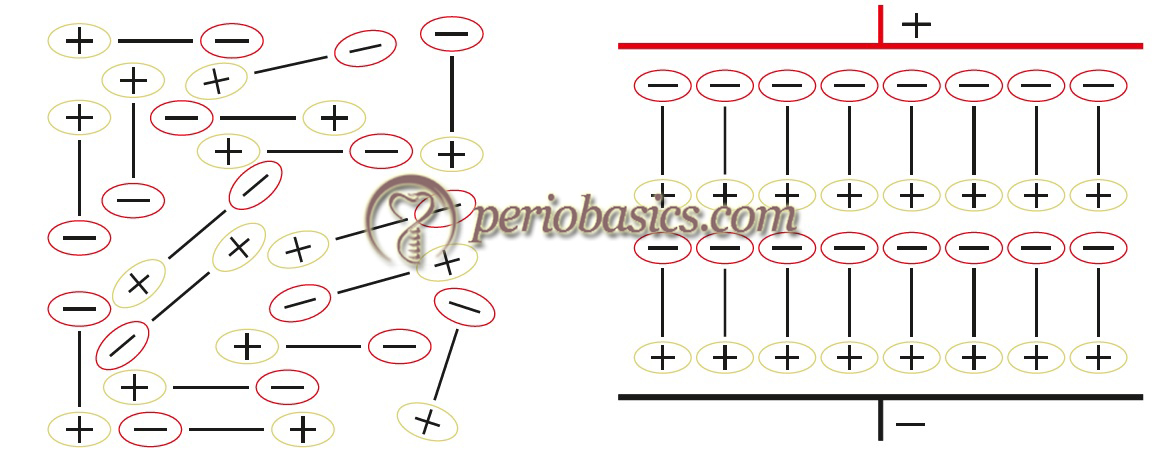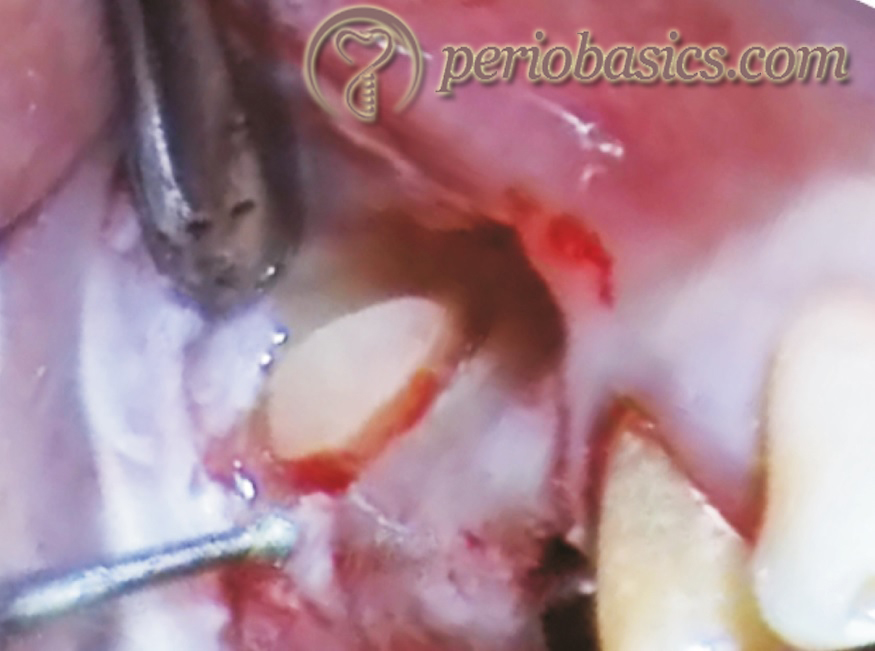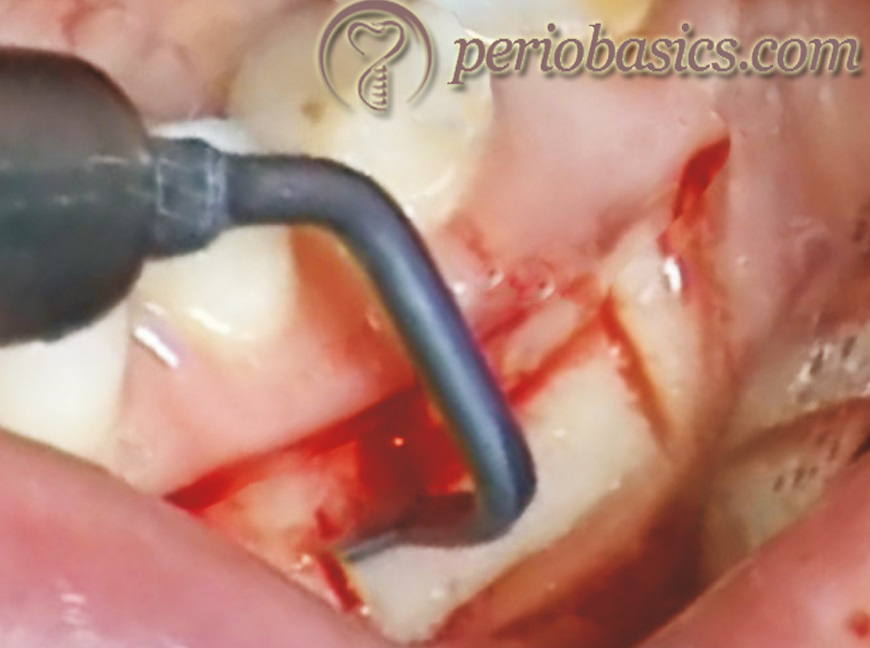Introduction to piezosurgery
Piezosurgery is a new technique which performs osteotomy or osteoplasty utilizing ultrasonic vibrations. It is primarily an ultrasound machine with modulated frequency and a controlled tip vibration range. It has received a wide acceptance in the medical and dental profession in a relatively shorter duration of time. It has simplified the surgical procedures which involve bone cutting or reshaping. In the following discussion, we shall discuss in detail, the physics involved in piezosurgery and its clinical applications in periodontics and implant dentistry.
Periobasics: A Textbook of Periodontics and Implantology
The book is usually delivered within one week anywhere in India and within three weeks anywhere throughout the world.
India Users:
International Users:
Historical aspect and physics involved in piezosurgery
‘Piezo’ is a Greek word which means ‘pressure’. Piezosurgery is based on the effect of changing the electrical field on crystalline structure, referred to as “piezo-effect”. The changes in the three-dimensional structure of a crystal in chan-ging electrical field strength results in ultrasonic vibrations which can be utilized clinically for various purposes. Around 1880, The French physicists Jacques and Pierre Curie, in collaboration with Gabriel Lippmann, discovered that a measurable electric loading is induced by the application of mechanical pressure and power to body surfaces (e.g., quartz, turmalin, barium titanate) 1, 2. Therefore, it was also possible that in varying strength of the electrical field, a piezoelectric material may show dimensional changes. Piezo-effect is observed only in crystalline anisotropic materials and cannot be observed in symmetrical homogenous ………. Contents available in the book ………. Contents available in the book ………. Contents available in the book ………. Contents available in the book ……..

Piezosurgery has been used in medicine since early 1980’s. In 1961, McFall et al. 3 performed the first ultrasound surgery in bone tissue. Bone removal with ultrasonic instruments was later on performed by Horton et al. (1981) 4 using ultrasonically driven instruments. Torrella et al. (1998) 5 and Vercelotti et al. 6-9 described the use of this technology for maxillary sinus grafting procedures. Presently, the technology is extensively used in various forms in both medical and dental fields.
Piezoelectric devices produce ultrasonic vibrations with an average frequency of 25-29 kHz, an oscillation (amplitude) of 60-210 μm, and power up to 50 W, which allows an effective cutting of mineralized bone tissue without damaging the soft tissue 7, 10-12. These parameters of vibration allow precise cutting of the bone with minimal tissue trauma during surgical procedures such as the inferior alveolar nerve lateralization, osteotomies in the ………. Contents available in the book ………. Contents available in the book ………. Contents available in the book ………. Contents available in the book ……..
One more advantage of this technology is that high-frequency ultrasonic vibrations produce cavitation effect (read more about the cavitation effect in “Sonic and ultrasonic scalers in periodontal treatment”) which facilitates maximum intraoperative visibility by producing a blood-free surgical site. Presently available piezoelectric devices are equipped with various inserts which can be used according to the requirement of surgery. The micrometric cutting facilitates precise cutting action with an excellent surgical tactile control. Furthermore, selective cutting of hard tissue minimizes the risk of adjacent soft tissue damage.

Presently, there are various clinical applications of peizosurgery, especially in implant dentistry. Peizosurgery has simplified the bone harvesting procedure thus, it is quite useful in harvesting autogenous bone graft.
Biological aspects of piezosurgery in bone tissues
It is well established that temperature changes while performing surgical procedures on bone has a significant effect on the bone cells. During osteotomy with power-driven instruments, the temperature threshold for tissue survival has been established as 47⁰C for 1 min. Above this limit, osteocytes are irreversibly damaged and osteonecrosis results 13, 14. The piezosurgery unit is equipped with an irrigant supply system which continuously supplies irrigation to the working tip, thus facilitating bone temperature maintenance while performing cutting.
Studies have been done which have compared the bone cell viability with various bone harvesting procedures including piezosurgery technique. In one study, various bone harvesting methods were investigated, which examined the particle size, percentage of necrotic and vital bone, and osteocyte number per unit of surface area using microphotography and histomorphometric analysis 15. It was observed that bone vitality was best with chisels, osteotomes, and piezoelectric surgery techniques. These findings have been supported by other studies also 16, 17. In another study, Vercellotti et al. (2005) 8 compared bone response after osteotomy and osteoplasty performed with carbide drill, a diamond drill, and piezosurgery. The observations were made at 14, 28, and 56 days. The authors concluded that the sites were carbide drill and diamond drill were used, demonstrated bone loss in 14 days, in contrast to piezosurgery, where there was an increase of bone tissue. At 28 days, bone formation and cementum and periodontal ………. Contents available in the book ………. Contents available in the book ………. Contents available in the book ………. Contents available in the book ……..
In studies done by Labanca et al. (2008) 18 and Preti et al. (2007) 19, it was demonstrated that damage to the osteocytes was reduced with the use of ultrasonic bone cutting device for osteotomy procedures along with better bone cell survival during bone collection as compared to conventional procedures. Furthermore, it was also found that piezosurgery technique stimulated osteogenesis around the implant by promoting a greater number of osteoblasts on implant receptor sites.
Indications of piezosurgery
There are various periodontal, implant-associated and other oral surgical procedures where piezosurgery is indicated. These include,
Periodontology
Crown lengthening technique.
Resective and regenerative surgery.
Implantology
Maxillary sinus lift.
Ridge expansion (crestal splitting).
Inferior alveolar nerve lateralization.
Bone harvesting techniques.
Oral surgery
Dental extraction.
Third molar extraction.
Osteogenic distraction.
Cyst removal.
Endodontic surgery.
Bone harvesting (particulate and blocks).
Orthodontic Surgery
Osteotomy and Corticotomy.
Advantages and disadvantages of piezosurgery
Advantages:
- The operator gets a clear vision of the surgical area from the pressurized irrigation and cavitation effect.
- A good hemostasis is ensured due to the cavitation effect.
- Bone sectioning can be performed with micrometric sensitivity.
- The risk of damaging the adjacent soft tissue is minimized while cutting through hard tissues.
- Because of minimal damage to the bone while cutting, heal-ing occurs faster.
- Piezosurgery provides the ease of harvesting intra- or extra-oral autogenous graft. Due to its inserts with various angles, it can be easily used in areas where it is difficult to see and reach.
- Due to the absence of macro-vibrations, patients feel very comfortable during surgeries under local anaesthesia.
Disadvantages:
- Use in patients with pacemakers is not recommended.
- The piezosurgery unit is costly.
- The duration of the surgical procedure is longer with the application of piezosurgery.
- To gain experience with piezosurgery in the oral and max-illofacial areas, more practice time might be required for clinicians.
Clinical applications of piezosurgery
There are various clinical applications of piezosurgery in both periodontal and implant-related surgical procedures. These procedures include the following,
Maxillary sinus lift procedure:
One of the most useful applications of piezosurgery is in the maxillary sinus lift procedures. The most common complication during the sinus lift procedure using traditional methods is perforation of the Schneiderian membrane. While performing direct or indirect sinus lift procedure, the instrument may accidently puncture the membrane making a communication between the oral cavity and maxillary sinus. Piezosurgery has reduced this risk to minimum because the working tip cuts only the mineralized tissue without damaging the soft tissue 6, 20. Surgical tips with different shapes and designs have been developed specifically to perform the sinus lift procedure. Furthermore, for lifting the Schneiderian membrane, tips have been ………. Contents available in the book ………. Contents available in the book ………. Contents available in the book ………. Contents available in the book ……..

Harvesting autogenous bone graft (particulate and block):
Autogenous bone graft is considered as gold standard for bone grafting procedures. Various techniques have been used to harvest both particulate and block grafts. Particulate autogenous bone graft with a particle size of 500 μm is considered ideal for bone regeneration. The introduction of piezosurgery has further improvised the bone harvesting techniques. Specific tips (e.g. osteoplasty OP1 to OP3 tips provided with Mectron Piezosurgery unit) have been designed which gently scratch along the surface of the bone facilitating harvesting of bone chips.
For horizontal and vertical augmentation procedures, block graft is a more suitable option than particulate graft. The autogenous block graft can be obtained from intraoral or extraoral sites. The classical intraoral sites for block graft harvesting are the chin and linear oblique ridge area while the extraoral site is the iliac crest. Conventional procedures to harvest block graft require a large area to be exposed to provide the clinician with good access to the operative site and to protect ………. Contents available in the book ………. Contents available in the book ………. Contents available in the book ………. Contents available in the book ……..

Periodontal bone defects:
As already stated, piezosurgery device efficiently provides the autogenous bone graft with minimal trauma to the tissues. Although, various bone substitutes are available for bone grafting presently, but autogenous bone graft is still the gold standard. In periodontal defects where regenerative therapy has been planned, piezosurgery devices are useful in harvesting particulate bone grafts with minimal trauma.
Surgical crown lengthening:
The procedure involves osteoplasty or ostectomy around the involved tooth. Piezosurgery units are equipped with various inserts which can be used for osteoplasty and ostectomy. Furthermore, piezosurgery device may also be used to develop positive, physiologic architecture of bone support of the involved teeth. The device allows for precise bone removal without damaging the root surfaces.
Bone splitting:
Narrow ridges are commonly encountered while placing dental implants. Ridge-split technique is a common technique used for bone expansion to facilitate the placement of implants of the desired diameter. Piezosurgery unit is provided with specific inserts designed for splitting the ride to achieve ridge expansion. With these tips, the entire osteotomy length can be expanded by inserting osteotomes with minimal trauma. The ridge separation can be achieved till the desired depth with minimal risk of undesired fractures, especially in predomi-nantly hard (cortical) bone. It has been reported that bone splitting using piezosurgery reduces the risk of bone fracture because of increased bone elasticity after osteotomy with ultrasonic intermediate vibrations 21. Furthermore, the ………. Contents available in the book ………. Contents available in the book ………. Contents available in the book ………. Contents available in the book ……..
Inferior alveolar nerve lateralization:
The major advantage of using piezosurgery device for inferior alveolar nerve lateralization is that it allows a safe osteotomy and an easy access to release the nerve 22. The ultrasonic vibrations remove the bone overlying the canal while preserving the soft tissues. It has been demonstrated that the risk of inferior alveolar nerve injury is reduced significantly with the use of piezoelectric device 21. A detailed description of the basic techniques involved in inferior alveolar nerve lateralization has been given in “Clinical procedure for dental implant placement”.
Removal of osseointegrated implants:
Sometimes removal of an osseointegrated implant becomes necessary for various reasons, including undesirable position or major esthetic concerns, etc. The implant-bone interface does not allow easy removal of the implant and it is difficult to break the interface. The conventional procedures carry a high risk of fracturing the peri-implant osseous walls 23. Piezosurgical devices allow efficient handling of this situation by specific tips which have been designed particularly to remove osseointegrated implants. In their investigations, Leclercq et al. (2008) 23, 24 studied the efficacy of ultrasound piezoelectric technique in procedures such as nontraumatic removal of osseointegrated implants, bone graft removal at the mandibular ………. Contents available in the book ………. Contents available in the book ………. Contents available in the book ………. Contents available in the book ……..
Precautions while using piezosurgery devices
The piezosurgery technique requires special surgical skill to perform a precise procedure. The major disadvantage of this technique is that it requires more operating time for bone preparation. The bone cutting is especially slow in D1 type of bone. Bone cutting in denser bone results in early wearing of the tips. Furthermore, fractures of the ultrasonic tips may also happen during corticomedullary bone cutting 25. For this reason, the tips should be examined thoroughly before use and replaced ………. Contents available in the book ………. Contents available in the book ………. Contents available in the book ………. Contents available in the book ……..
Conclusion
Piezosurgery technique has multiple advantages over conventional bone-related surgical procedures. The technique allows efficient surgery in deeper and difficult to reach areas. Furthermore, in areas where vital neurovascular structures need to be preserved, these devices are very helpful. The future prospects of using piezosurgery promise to revolutionize implantology. However, professional training and experience over the technique are must, to get best results.
References
References are available in the hard-copy of the website.
Periobasics: A Textbook of Periodontics and Implantology
The book is usually delivered within one week anywhere in India and within three weeks anywhere throughout the world.

